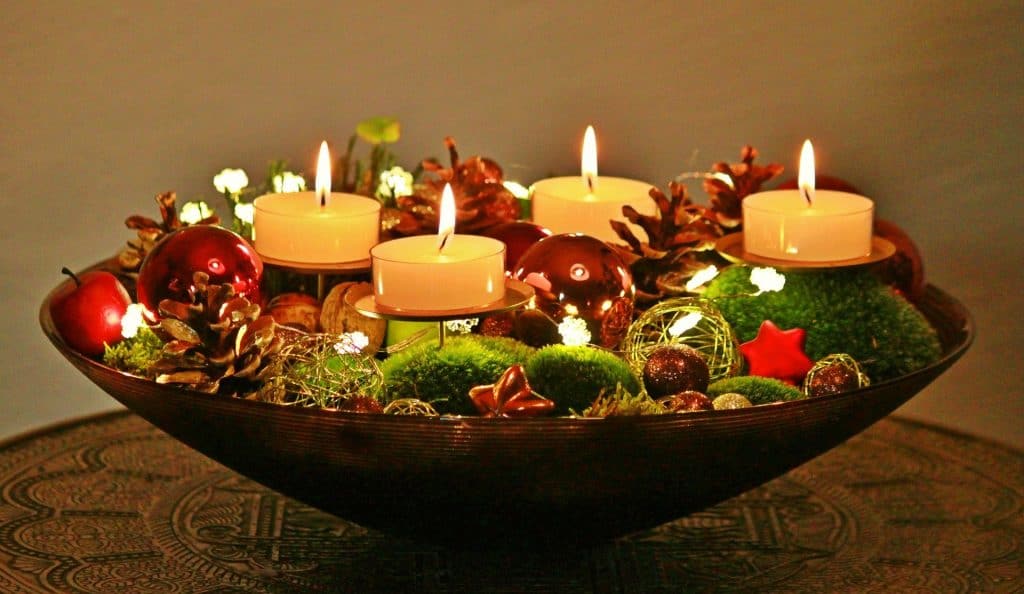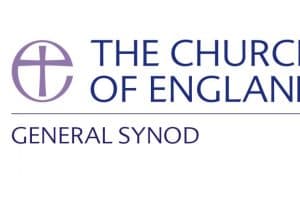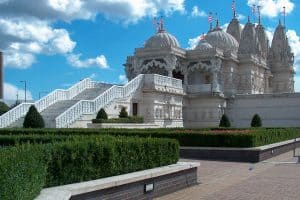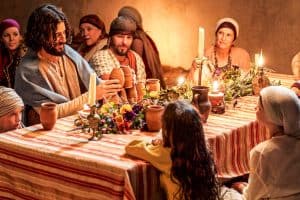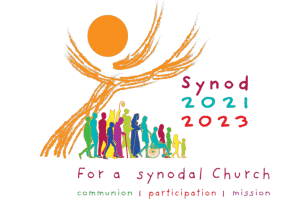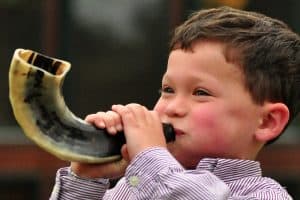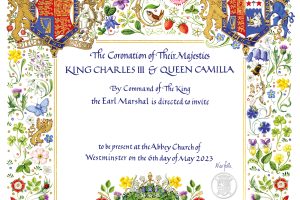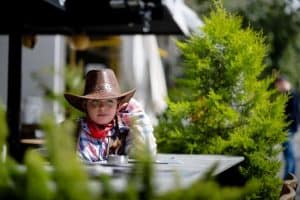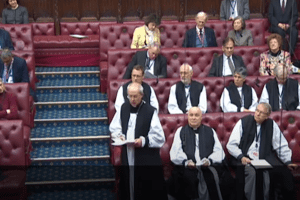The lead up to Christmas Day, the season of Advent, is famous for its carols, decorations and lights – but what is its significance to Christians?
What is Advent?
Advent is derived from the Latin word that means “coming” — it is the season in the church calendar when Christians traditionally prepare to celebrate the coming of Jesus on Christmas Day.
Historically, Advent was understood as a quiet season of waiting, reflecting amid the darkness of the world, and looking forward to hope and light arriving at Christmas time, which in the liturgical calendar does not formally begin until 24 December. Some more traditionally minded churches and Christians will still not put up festive decorations or sing Christmas carols until Christmas Eve to adhere to the more austere, reflective tone of Advent.
However, in modern times and for most believers Advent has gradually evolved to become more focused on celebration and anticipating the joys of Christmas.
Many churches across different denominations have developed traditions of holding numerous special services throughout December.
Carol Services
Probably the most popular and most common kind of season service is a carol service, familiar with millions of Britons including many who may never normally attend church.
These services vary widely, but would typically include the singing of several traditional Christmas carols, interspersed with readings from the Bible, retellings of the Christmas story, musical and choral performances and sometimes short sermons or talks. They are normally held in the evening, sometimes by candlelight.
The contemporary carol service can in part be traced back to innovations by Archbishop of Canterbury Edward White Benson, who, as Bishop of Truro from 1877 to 1882, created the now-famous format of Nine Lessons and Carols on Christmas Eve 1880. The service — which includes nine short readings from the Bible interspersed with carols — is today most tightly associated with a service broadcast each year from King’s College, Cambridge.
Many more informal Christian traditions have attempted to make the carol service more relaxed and outward-focused in recent years, offering worshippers mince pies and mulled wine before or after the service and aiming any preaching at those unfamiliar with Christianity or churchgoing.
Christingle
A Christingle service is held specifically for children on one of the four Sundays of Advent. It uses craft to engage youngsters with the Christmas story and to impart the key themes of the Christian message.
It was invented by German believers in the Moravian tradition (an old Protestant church born out of the Reformation) in the 18th century and introduced to Britain by the Church of England Children’s Society in the 1960s.
The centre of the service is the “Christingle” itself, an orange with a red ribbon tied around it and topped with a lighted candle. Sweets are placed on the end of four cocktail sticks, which are then stuck into the orange.
During the service children are walked through how to construct the Christingle and told what each element represents. The orange is the world which God made, the sweets stand for the good things in God’s creation, the red ribbon symbolises Jesus’s blood which he shed on the cross because of his love for all, and the candle represents Jesus bringing light into the darkness.
Nativity/crib service
Also popular with children, a nativity or crib service centres around an amateur drama retelling of the Christmas story. They are sometimes put on by churches in collaboration with a local school or nursery.
Children volunteer to take on different characters in the story, normally including at a minimum, Mary (mother of Jesus), Joseph (her husband), the angel Gabriel (who is sent by God to tell Mary she will give birth to Jesus), shepherds (who are told by other angels when Jesus is born to go and worship him) and wise men/kings (who come from overseas to worship Jesus after his birth and bring him gifts).
Youngsters are often also encouraged to dress up as their characters, and there is often singing of carols and short, simple Bible readings as well.
Midnight Mass
Celebrating communion at Christmas time is intended in part to remind worshippers to look beyond Christmas to Easter, and the purpose of Jesus’s coming into the world.
Historically, midnight mass was the first service of the liturgical season of Christmas proper and was held at midnight on 24 December as Advent ends and Christmas begins.
Today, most churches start the service earlier, at 10pm or 11pm often, and they act as a vigil ending with midnight and the first moments of Christmas morning.
The service often resembles a short carol service, with singing, Bible readings and a brief sermon or talk. Uniquely among Christmas services, midnight mass includes the sharing of communion (also known as the Eucharist), where believers eat bread and drink wine together to commemorate and participate in Jesus’s death on the cross.
What’s the programme?
Some of the famous services include the Nine Lessons and Carols from King’s College, Cambridge, broadcast on BBC2 on Christmas Eve. There will also be cathedral crib, midnight mass and Christmas Day services broadcast on radio and TV.
The Church of England’s website, AChurchNearYou.com, features more than 9,600 church Christmas events and a postcode tracker to find those taking place nearest to where you live.
Many other denominations have produced resources for in person and online Christingles, carol services and more.

